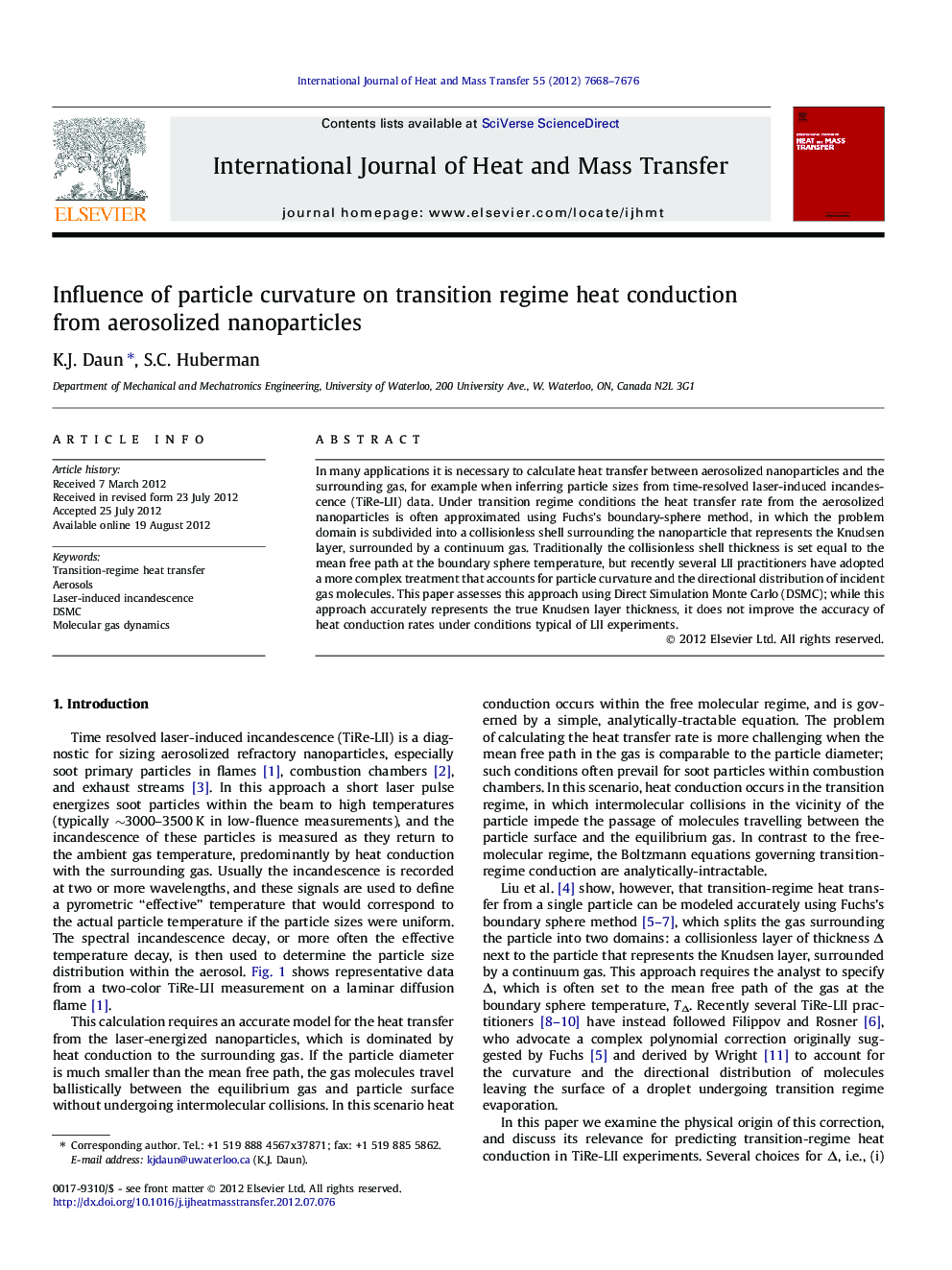| کد مقاله | کد نشریه | سال انتشار | مقاله انگلیسی | نسخه تمام متن |
|---|---|---|---|---|
| 7059408 | 1458088 | 2012 | 9 صفحه PDF | دانلود رایگان |
عنوان انگلیسی مقاله ISI
Influence of particle curvature on transition regime heat conduction from aerosolized nanoparticles
دانلود مقاله + سفارش ترجمه
دانلود مقاله ISI انگلیسی
رایگان برای ایرانیان
کلمات کلیدی
موضوعات مرتبط
مهندسی و علوم پایه
مهندسی شیمی
جریان سیال و فرایندهای انتقال
پیش نمایش صفحه اول مقاله

چکیده انگلیسی
In many applications it is necessary to calculate heat transfer between aerosolized nanoparticles and the surrounding gas, for example when inferring particle sizes from time-resolved laser-induced incandescence (TiRe-LII) data. Under transition regime conditions the heat transfer rate from the aerosolized nanoparticles is often approximated using Fuchs's boundary-sphere method, in which the problem domain is subdivided into a collisionless shell surrounding the nanoparticle that represents the Knudsen layer, surrounded by a continuum gas. Traditionally the collisionless shell thickness is set equal to the mean free path at the boundary sphere temperature, but recently several LII practitioners have adopted a more complex treatment that accounts for particle curvature and the directional distribution of incident gas molecules. This paper assesses this approach using Direct Simulation Monte Carlo (DSMC); while this approach accurately represents the true Knudsen layer thickness, it does not improve the accuracy of heat conduction rates under conditions typical of LII experiments.
ناشر
Database: Elsevier - ScienceDirect (ساینس دایرکت)
Journal: International Journal of Heat and Mass Transfer - Volume 55, Issues 25â26, December 2012, Pages 7668-7676
Journal: International Journal of Heat and Mass Transfer - Volume 55, Issues 25â26, December 2012, Pages 7668-7676
نویسندگان
K.J. Daun, S.C. Huberman,